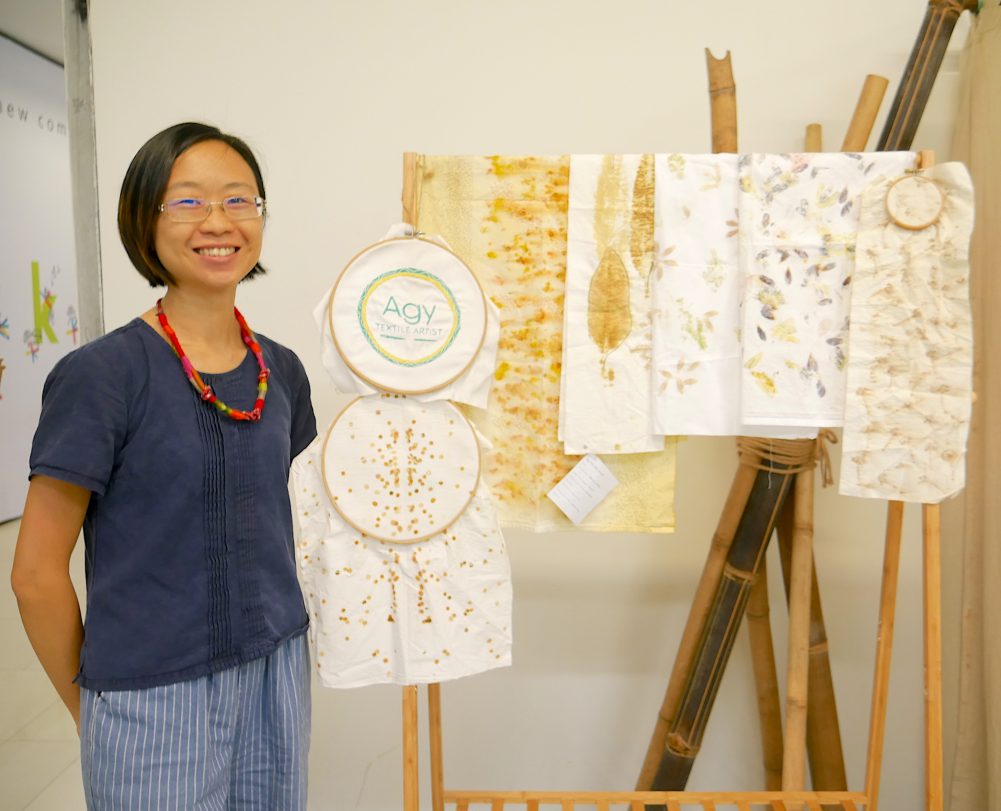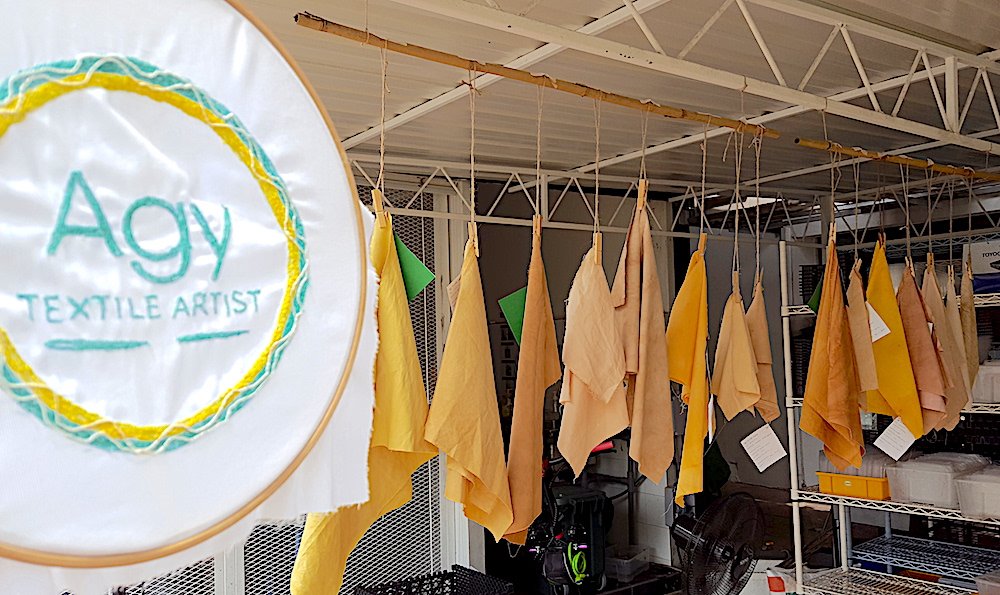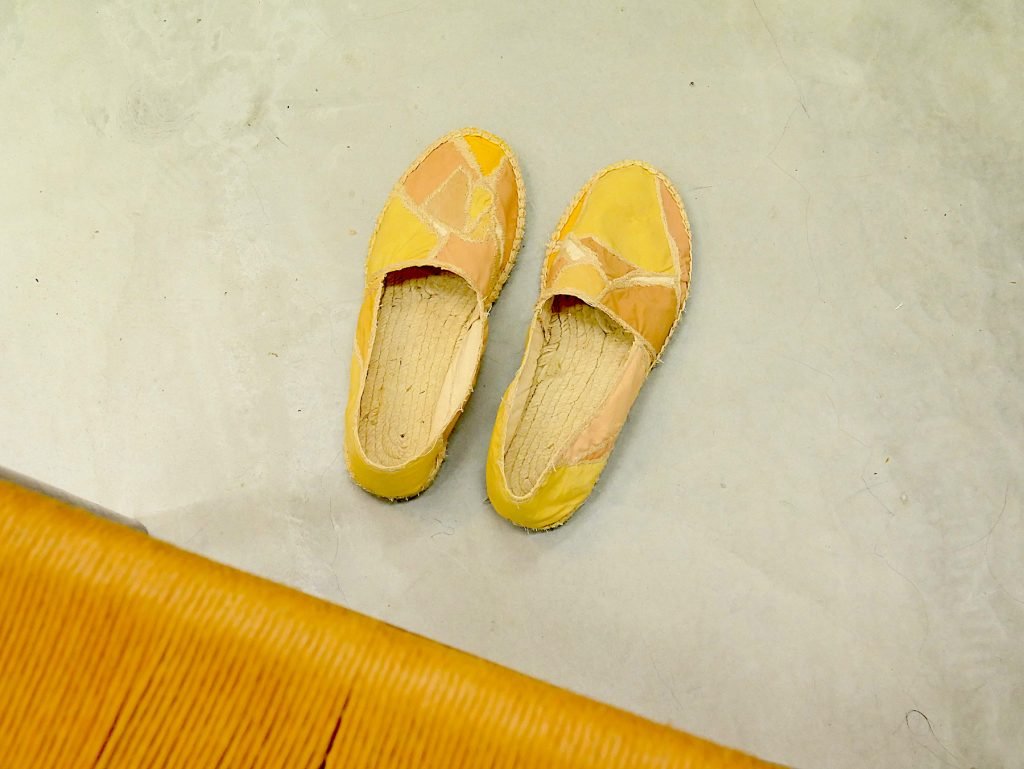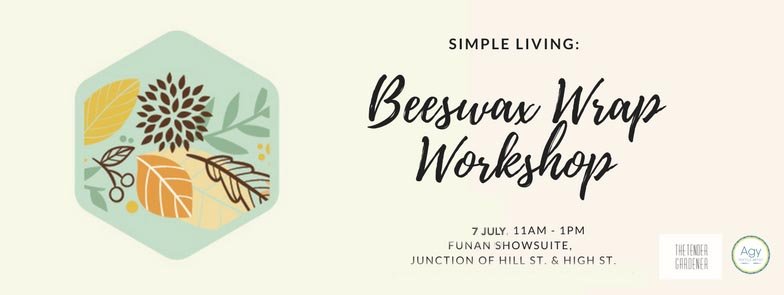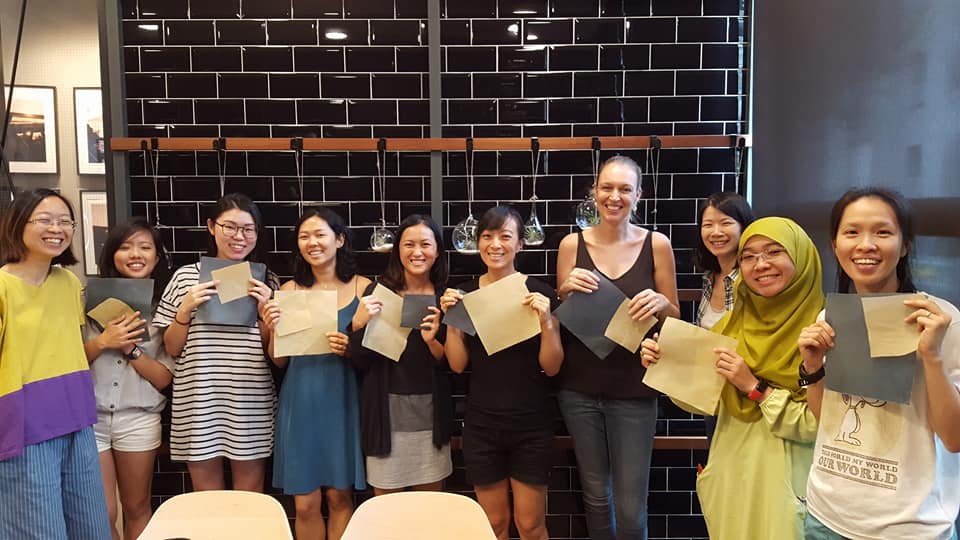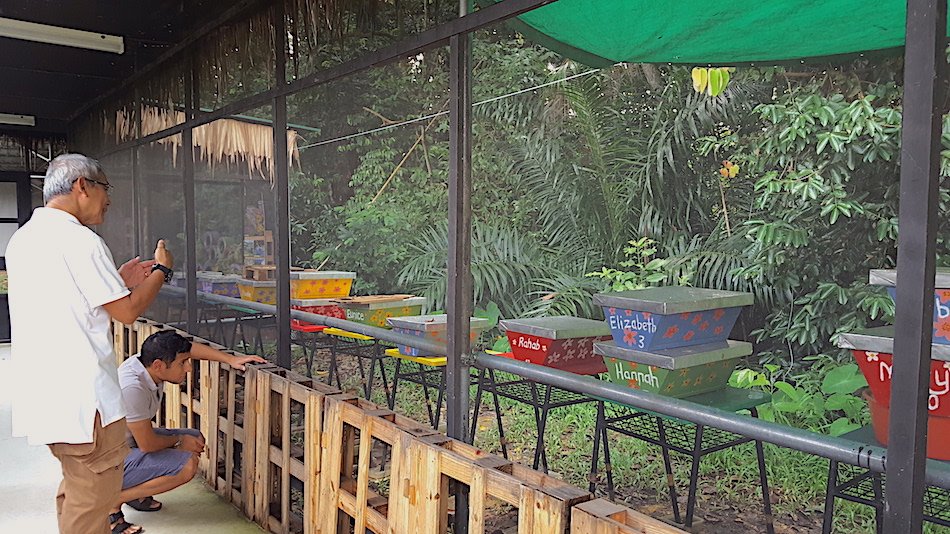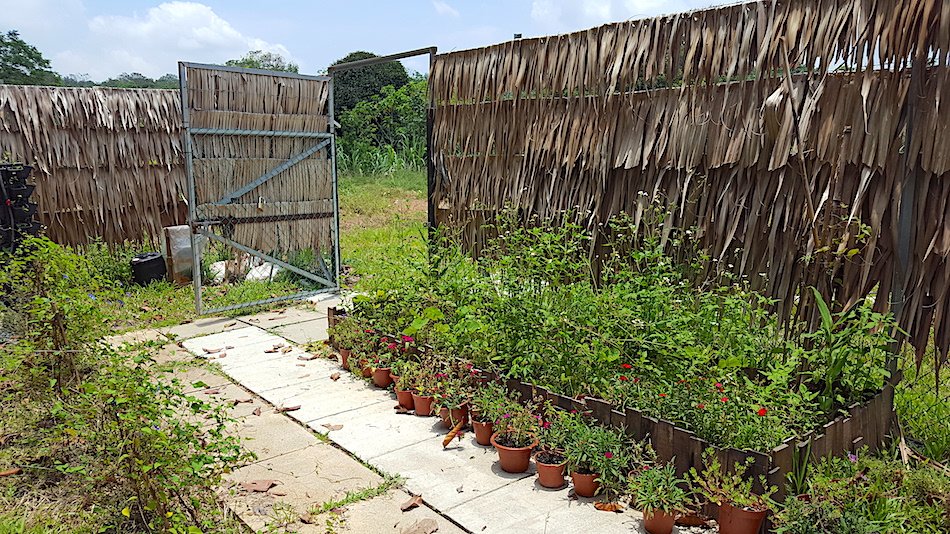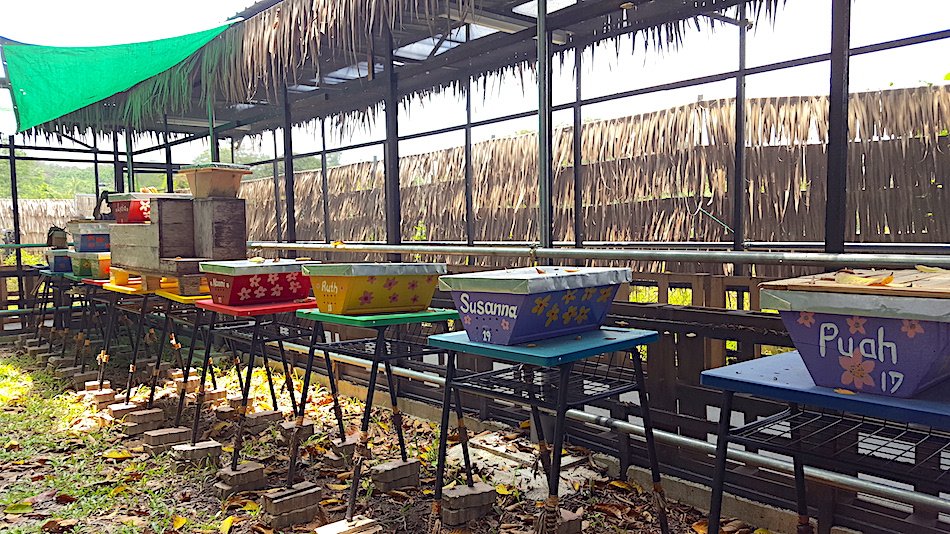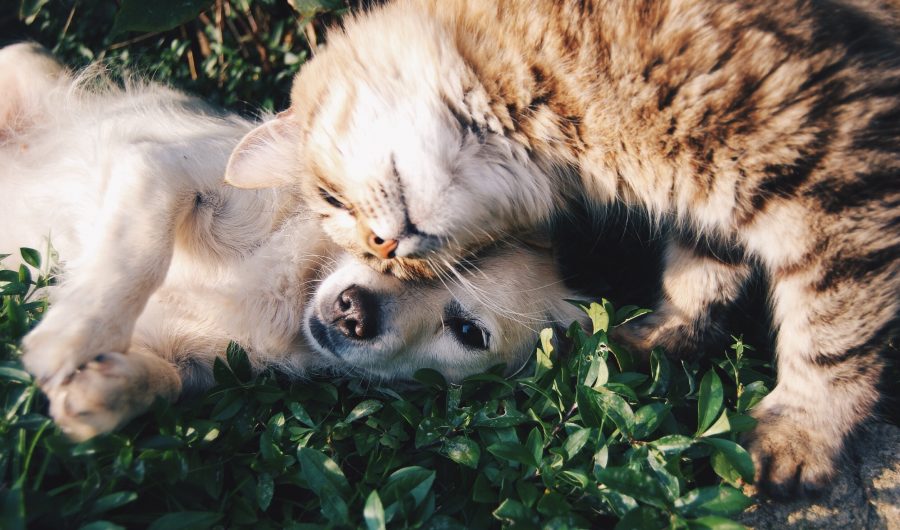Agatha Lee, or Agy, for short, is a long-time environmental advocate who raises awareness of environmental sustainability through her work with textiles. Formerly from Hong Kong, she has been living with her family in Singapore for almost two decades now. She spent half of that time here at the National Environmental Agency before finding her true calling in sustainable fashion, starting with an informative blog on repairing and upcycling clothing, and then co-founding Connected Threads Asia, which runs the local Fashion Revolution Day annually. She eventually moved on to focus on personal artistic projects.
After spending many years honing her craft, Agy developed into an artist, using natural materials and discarded fabrics to create wearable fashion or art pieces, always remaining true to her sustainability roots. She now goes by the name Agy Textile Artist. These days she also busies herself with The Green Collective, a gathering of local eco lifestyle brands in one place – offering retail, co-working office space and workshops.
I’ve known Agy for some years now in the environmental sector, but it was only last year that we began collaborating on workshops, mainly beeswax wrap classes. I’ve always admired the work she does and I love her refashioned pieces, especially her latest wardrobe addition – espadrilles made with fabric scraps. Agy is very creative indeed!
Apart from natural dyeing, she specialises in free motion embroidery, a technique she has used to create artwork from her Nature in Stitches series, and Ocean series, the latter being a collaboration with another artist, Arana Kennedy. Some of this work is documented on her YouTube page, along with other artistic endeavours such as various mending techniques, the natural dyeing process, as well as hand embroidery, so be sure to check it out!
I spent some time with Agy and created my first Garden Stories video on YouTube. Here’s my interview with her.
1. When did you discover your love for working with plants?
I enjoy working with plants and experimenting with their colours. I realised it when I started to explore the parks in my neighbourhood two years ago when I needed to slow down in life. As I reconnected with nature, I started to notice their different textures and how their beauty could be translated into stitches and colour in textiles. There are so many plants in Singapore, and I have to admit I have only touched the surface.
2. Where do you get your inspiration for your creations from?
Nature! There’s so much inspiration out there, you just have to look! I love observing my surroundings and how the public interacts with it. My first work was a series called Nature in Stitches, where I interpreted the bark of common trees in Singapore using natural dyes and free motion embroidery. I then worked on a collaborative piece called Ocean, which looks at how man’s interference with nature has a negative impact on corals.

